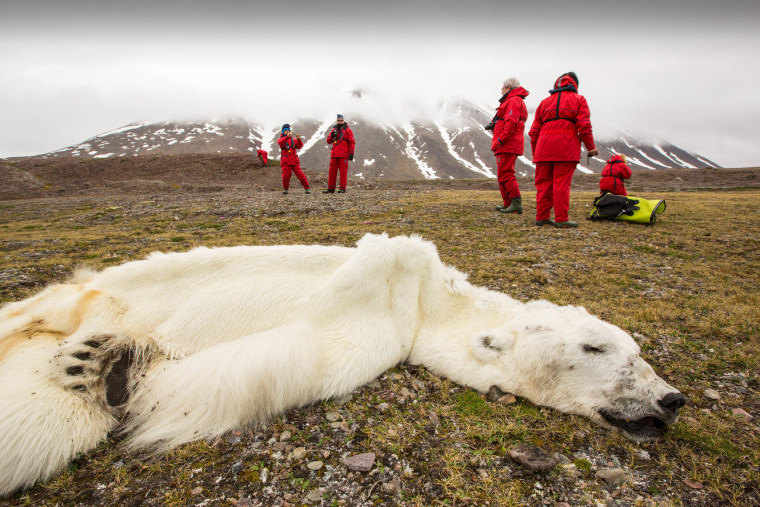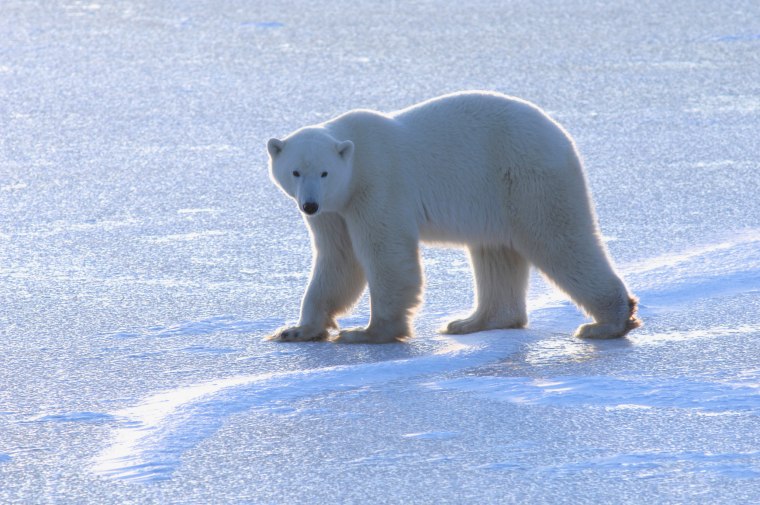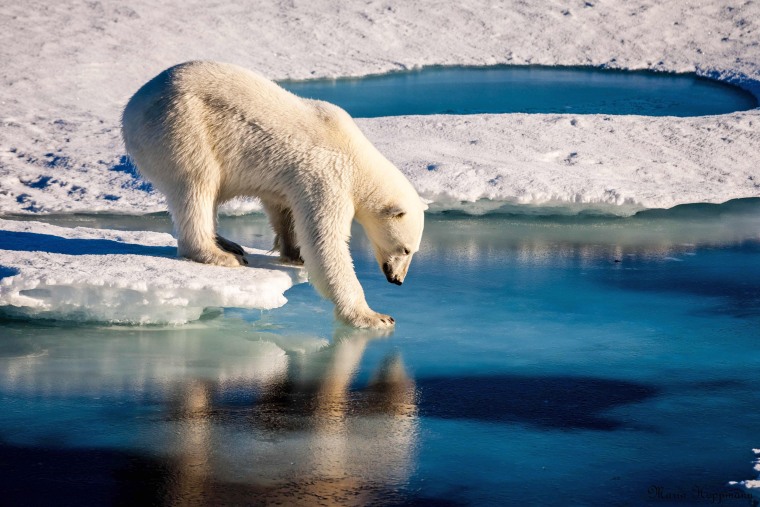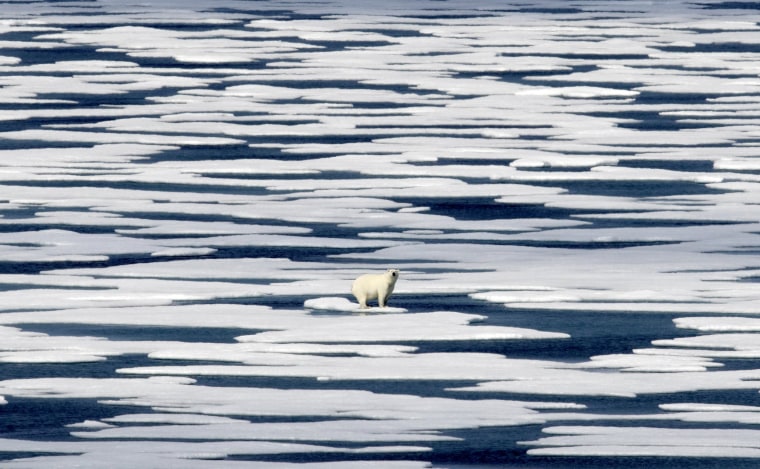For the past two decades, scientists have been monitoring the effects of a warming Arctic on the world’s polar bears — and the bears' future has looked increasingly bleak.
The latest estimates suggest that Arctic sea ice is disappearing by 14 percent a decade, drastically limiting the bears’ ability to hunt the seals on which they feed. And research on bears living on the Arctic islands of Svalbard shows that the animals are now reproducing at a rate one-fifth of that seen just 20 years ago.
Given these dismal statistics, scientists now predict that the global population of polar bears could fall from 20,000 to 30,000 today to fewer than 5,000 by 2100 — and beyond that no one knows. Even if a small population of bears manage to hang on, they’re not out of the woods.

“One of the problems when population levels in a species get this low is that you start to get an increased likelihood of genetic disorders due to inbreeding,” says University of Alberta biologist Andrew Derocher.
Luckily for the bears and the humans who love them, Derocher and a cadre of fellow scientists are developing a complex set of strategies to save the animals. It’s an audacious plan, encompassing everything from providing extra food for the bears to turning female grizzly bears into surrogate moms for their white-coated cousins.
But it may be all that stands between the bears and oblivion.
Food for famished bears
Polar bears can now be found across the Arctic Circle from Alaska to Russia. But as the planet heats up and sea ice melts, the animals’ range will shrink along with their population. (Some people have suggested replacing lost sea ice with artificial floes, but this would be unlikely to work because algae — the basis of the entire food chain that ultimately provides seals for the bears — grows only on real ice.) Ultimately, the only polar bears to survive in the wild may be the ones living in the Norwegian bay region of the Canadian archipelago.
“This region is expected to be one of the last bastions of Arctic sea ice,” says Steven Amstrup, chief scientist at Polar Bears International, a conservation group in Bozeman, Montana. “With the right planning and strategies, we can help polar bears remain there as long as possible.”
For 5,000 bears to survive in this region (the minimum thought to be required to prevent inbreeding), scientists believe the animals may need help from humans. Derocher envisions helicopters zipping around the region, dropping bear chow. Without such deliveries, he says, hungry bears might wander south into human settlements — and risk being shot.
Airdrops of bear chow wouldn’t come cheap. Derocher estimates that delivering enough chow to sustain those 5,000 bears could cost the Canadian government $2 million a month. Given the hefty price tag, he proposes that the chow be used only during times when the bears are finding it especially difficult to catch and kill seals.
Maintaining genetic diversity
The Norwegian bay polar bears are genetically unique. If they’re the only bears to survive in the wild, they may lack the genetic diversity needed to stay healthy over the long term. “If you don’t have a diverse population, you run the risk of animals not having the adaptability to deal with a disease, for example,” Derocher says.
To address this problem, Derocher and his fellow scientists think it might be necessary to relocate polar bears from other parts of the Arctic to the Norwegian bay region. The animals would be shot with tranquilizer darts and then transported north by aircraft for release.

“You’d mainly be looking at relocating juveniles, as the problem with shifting adult polar bears is that they immediately want to go back where they came from,” Derocher says. “You’d also look to initially ensure there’s lots of food resources, perhaps through deposits of bear chow, to make them keen to stay there long term.”
Another possibility would be to keep a diverse population of polar bears in zoos and then reintroduce the captive animals into the wild if they’re needed to sustain a dwindling population. “Once the planet starts to cool again in hundreds or thousands of years, and sea ice reforms, you would have a nucleus of bears which you could then allow to recolonize the areas they formally occupied,” Derocher says.
Surrogate mothers
If the population of polar bears in the wild drops precipitously, scientists may seek help from grizzly bears, which are genetically similar to polar bears but well adapted to survive on an increasingly hot planet.

Derocher thinks we could freeze polar bear sperm and eggs and use them, if necessary, to create embryos that would be transplanted into female grizzlies. “We know this would be quite viable, but that’s probably a scenario we’re only looking at if we see a catastrophic decline in the species in the second half of this century,” he says.
But Amstrup warns that unless we find ways to mitigate the ongoing warming of the Arctic, the species will cease to exist in the wild even if we turn to assisted reproduction.
“If human-driven climate change continues unabated, the last ice areas will ultimately disappear, and the remaining wild bears with them,” he says. “There’s no future for polar bears in an Arctic without the sea ice which enables them to hunt and form the dens where they raise their cubs. From then on, the species will only exist in zoos.”

